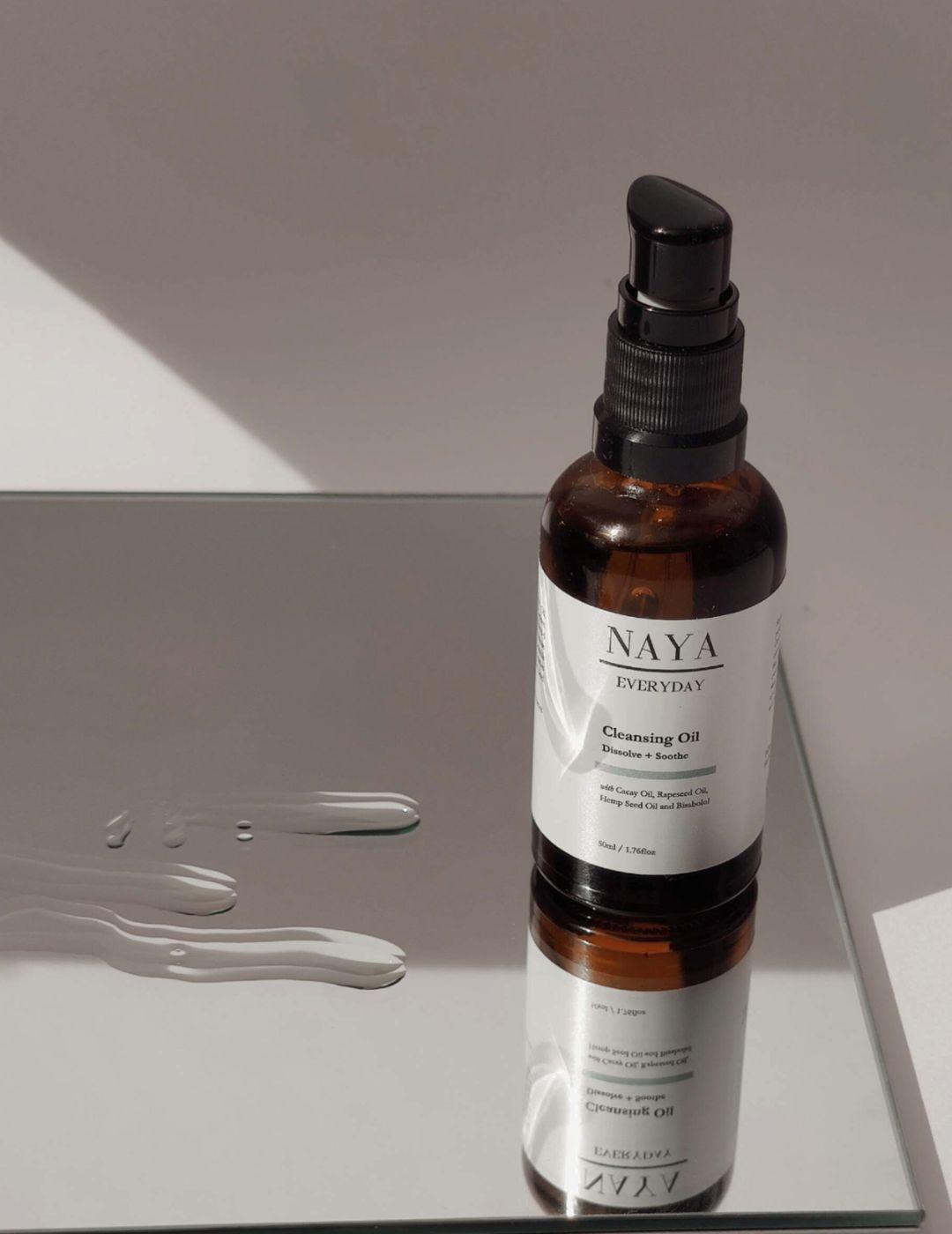Rhodiola Rosea: Discover the Antioxidant Benefits for Your Skin
Arctic Rhodiola
Introduction for the Arctic Rhodiola
The arctic rhodiola is also called “golden root” or “arctic root” and belongs to the succulent plant family because it is characterised by its thick-leafed plants. The plant has a high content of antioxidants, allowing the plant to protect and care for the skin. “Succus” comes from Latin and means juice. And this is the advantage of succulent plants: The thick leaves of the plants store the water particularly effectively, so that the plants survive in an extremely dry and stony environment. The name rosewort (Rhodiola rosea) has been preserved because the smell of the roots is reminiscent of the scent of roses.
What is Rhodiola rosea ?
As late as 1961, a Russian botanist located and identified golden root as Rhodiola rosea. Ever since, rose root received attention from the scientific community for its potential therapeutic capacity as an adaptogen and ergogen with putative anti-stress, mood-enhancing and performance-improving properties [22-24]. An adaptogen is a substance that increases our resistance to a variety of adverse physical, chemical or biological stressors in a non-specific way. An ergogen, like ginseng or caffeine, is a substance that enhances working capacity or exercise performance [25]. Hence, rose root counteracts exercise-induced fatigue and stimulates the recovery [26,27].
The “Arctic Root” – traditional medicinal plant and strong antioxidant
Rhodiola rosea is an herb that grows in the mountainous and arctic regions of North America, Europe and Asia, where it has been a part of traditional medicine. Thus its location and the process of extraction was a well-guarded secret. In the Arctic region north of the Arctic Circle, the native plants develop a special strength and resilience. The rose root survives in a barren and cold environment with its long, cold winters and short, intense summers. As a result, the plant contains a particularly high concentration of antioxidants, Vitamins and nutrients such as Salidroside or other Tyrolsole, organic acids and flavonoids.
“Ginseng of the North”
In Scandinavia, the Baltic countries and Russia, rose root is known as a medical plant it is also consumed as a tea or dietary supplement. In natural medicine, the root extract is used to strengthen the immune system or as a means of increasing concentration and relieving stress.
But also the positive effects for the skin are impressive. That’s why we use the potent root extract of Rhodiola Rosea in our Everyday Glow Serum.
The arctic root extract inhibits pigmentation and is particularly well tolerated
Clinical studies show the positive effects of the antioxidants of rose-root extract on the skin cells. The plant activates the skin’s natural defense mechanism by strengthening the function of the cell membrane against UV radiation and inhibiting the melanin-producing enzyme tyrosinase. Pigment irregularities are compensated.
What does this mean for natural skin care?
The root extract of the arctic rose root protects well with the high content of antioxidants from free radicals caused by UV radiation and pollution. Thus, the extract prevents excessive pigmentation and also has skin tone lightening effect. As scientific studies also shown, the active ingredient prevents moisture loss, which protects the skin from dehydration and especially cares for dry and sensitive skin. The skin feels smooth and healthy.
Rose roots (Rhodiola rosea) – A mood-enhancing adaptogen with ergogenic function
Even under normal conditions, our skin has a high energy requirement. But sometimes our life is so exhausting that our skin cannot follow. Insufficient energy supply and over-production of ROS induce cumulative oxidative damage. If the skin’s counteracting mechanisms cannot keep pace, our skin not only becomes tired-looking, but also develops visible signs of age-ing.
Mitochondria play a key role in energy production. Thus products that target the mitochondria will thus help to energize natural skin functions to reveal a younger and more vital radiance.
Mitochondrial activation and free radical mitigation are the most plausible mechanisms by which rose root improves physical performance and stress tolerance. Thus the ingredient reports to stimulate mitochondrial function and to protect them against stress-induced dysfunction by activating ROS removing enzymes [25,28-30]. These properties make rose root extracts a suitable ingredient for feel-good skin care products. And a perfect complement to our other ingredients in the Everyday Glow Serum. We often cannot prevent stressful situations; thus, it is about handling them and how to support your skin in those situations
In Conclusion: The Everyday Glow Serum works on several levels
- Power: Rutin from caper buds helps to stimulate mitochondrial biogenesis and ATP synthesis. To put it simply, more mitochondria produce more energy.
- Protection: Chlorogenic acid from mulberry leaves stabilizes the mitochondrial membrane and improves the oxidative status by inhibiting ROS formation or by inducing antioxidant enzymes. In more straightforward terms, mitochondria produce energy more efficiently and with less harmful by-products.
- Performance: Salidroside from rose roots is supposed to synergistically support mitochondrial activation and free radical mitigation. Rose roots, in addition, also provide anti-fatigue and mood-enhancing effects. In other words, stress situations are better tolerated and skin well-being is enhanced.
Taken together, our Everyday Glow Serum reinforces the energetic status of the skin to make it glow from the inside. It is an excellent ingredient to aim to reinvigorate tired-looking skin, giving it a look of perfection and happiness.
Reference
1. Mintel. http://www.mintel.com/press-centre/beauty-and-personal-care/mintel-announces-four-beauty-trends-set-to-impact-global-markets-by-2025. 2015.
2. Voet D, Voet JG. Electron Transport Chain and Oxidative Phosporylation. In: Biochemistry. 1 ed.1992.
3. Blatt T, et al. Stimulation of skin’s energy metabolism provides multiple benefits for mature human skin. Biofactors. 2005;25(1-4):179-185.
4. Wei YH, et al. Respiratory function decline and DNA mutation in mitochondria, oxidative stress and altered gene expression during aging. Chang Gung Med J. 2009;32(2):113-132.
5. Menon GK, et al. Mitochondria: a new focus as an anti-aging target in skin care. J Cosmet Dermatol. 2010;9(2):122-131.
6. Hudson L, et al. Mitochondrial damage and ageing using skin as a model organ. Maturitas. 2016;93:34-40.
7. Esser C, et al. Functions of the aryl hydrocarbon receptor in the skin. Semin Immunopathol. 2013;35(6):677-691.
8. Petitjean A, et al. Skin radiance: how to quantify? Validation of an optical method. Skin Res Technol. 2007;13(1):2-8.
9. Zhang H, Ma ZF. Phytochemical and Pharmacological Properties of Capparis spinosa as a Medicinal Plant. Nutrients. 2018;10(2).
10. Nabavi SF, et al. Pharmacological Effects of Capparis spinosa L. Phytother Res. 2016;30(11):1733-1744.
11. Seo S, et al. Rutin Increases Muscle Mitochondrial Biogenesis with AMPK Activation in High-Fat Diet-Induced Obese Rats. Nutrients. 2015;7(9):8152-8169.
12. Li T, et al. Rutin protects against aging-related metabolic dysfunction. Food Funct. 2016;7(2):1147-1154.
13. Ganeshpurkar A, Saluja AK. The Pharmacological Potential of Rutin. Saudi Pharm J. 2017;25(2):149-164.
14. Musallam I, et al. Investigation of Rutin Content in Different Plant Parts of Wild Caper (Capparis spinosa L.) Populations from Jordan Research Journal of Medicinal Plant. 2012;6:27-36.
15. Radojkovic M, et al. Optimization of Solid-Liquid Extraction of Antioxidants from Black Mulberry Leaves by Response SurfaceMethodology. Food Technol Biotechnol. 2012;50(2):167-176.
16. de Freitas MM, et al. Extracts of Morus nigra L. Leaves Standardized in Chlorogenic Acid, Rutin and Isoquercitrin: Tyrosinase Inhibition and Cytotoxicity. PLoS One. 2016;11(9):e0163130.
17. Zhou Y, Zet al. Chlorogenic acid ameliorates intestinal mitochondrial injury by increasing antioxidant effects and activity of respiratory complexes. Biosci Biotechnol Biochem. 2016;80(5):962-971.
18. Zhou Y, et al. Chlorogenic acid ameliorates endotoxin-induced liver injury by promoting mitochondrial oxidative phosphorylation. Biochem Biophys Res Commun. 2016;469(4):1083-1089.
19. Zou YX, et al. Mulberry leaf phenolics ameliorate hyperglycemia-induced oxidative stress and stabilize mitochondrial membrane potential in HepG2 cells. Int J Food Sci Nutr. 2014;65(8):960-966.
20. Doan KV, et al. Gallic acid regulates body weight and glucose homeostasis through AMPK activation. Endocrinology. 2015;156(1):157-168.
21. Burlando B, et al. Moraceae Plants with Tyrosinase Inhibitory Activity: A Review. Mini Rev Med Chem. 2017;17(2):108-121.
22. Amsterdam JD, Panossian AG. Rhodiola rosea L. as a putative botanical antidepressant. Phytomedicine. 2016;23(7):770-783.
23. Ishaque S, et al. Rhodiola rosea for physical and mental fatigue: a systematic review. BMC Complement Altern Med. 2012;12:70.
24. Panossian A, et al. Rosenroot (Rhodiola rosea): traditional use, chemical composition, pharmacology and clinical efficacy. Phytomedicine. 2010;17(7):481-493.
25. Walker TB, Robergs RA. Does Rhodiola rosea possess ergogenic properties? Int J Sport Nutr Exerc Metab. 2006;16(3):305-315.
26. Abidov M, et al. Effect of extracts from Rhodiola rosea and Rhodiola crenulata (Crassulaceae) roots on ATP content in mitochondria of skeletal muscles. Bull Exp Biol Med. 2003;136(6):585-587.
27. Xu J, Li Y. Effects of salidroside on exhaustive exercise‑induced oxidative stress in rats. Mol Med Rep. 2012;6(5):1195-1198.
28. Mao GX, et al. Salidroside protects human fibroblast cells from premature senescence induced by H(2)O(2) partly through modulating oxidative status. Mech Ageing Dev. 2010;131(11-12):723-731.
29. Palmeri A, et al. Salidroside, a Bioactive Compound of Rhodiola Rosea, Ameliorates Memory and Emotional Behavior in Adult Mice. J Alzheimers Dis. 2016;52(1):65-75.
30. Tan AC, et al. Native Australian fruit polyphenols inhibit COX-2 and iNOS expression inLPS-activated murine macrophages. Food Research International. 2011;44(7):2362–2367.
31. Belcher LA, et al. Evaluating 1,3-Propanediol for Potential Skin Effects. Cosmetic & Toiletries. 2013;125(5).
32. Sandoval-Acuña C, et al. Polyphenols and mitochondria: an update on their increasingly emerging ROS-scavenging independent actions. Arch Biochem Biophys. 2014;559:75-90.
33. de Oliveira MR, et al. Resveratrol and the mitochondria: From triggering the intrinsic apoptotic pathway to inducing mitochondrial biogenesis, a mechanistic view. Biochim Biophys Acta.
2016;1860(4):727-745.
34. de Oliveira MR, et al. Quercetin and the mitochondria: A mechanistic view. Biotechnol Adv. 2016;34(5):532-549.
35. Jeudy A, et al. Skin Radiance Measurement. In: Barel AO, Paye M, Maibach HI, eds. Handbook of Cosmetic Science and Technology. Vol 4. CRC Press; 2014:459-466.
36. Pouwer F, Snoek FJ, van der Ploeg HM, Adèr HJ, Heine RJ. The well-being questionnaire: evidence for a three-factor structure with 12 items (W-BQ12). Psychol Med. 2000;30(2):455-462.







Leave a comment